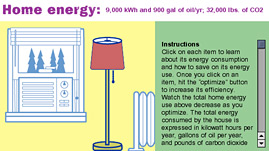The United States contains less than 5 percent of the world's population of 6.1 billion, but it consumes roughly 25 percent of the world's fossil fuel resources. Each American uses five times more energy than the average person in the world. In underdeveloped nations, individuals use from 0 to 10 percent of the energy that the average person in the world uses.
As underdeveloped countries become industrialized and their populations grow, the world's energy demands will continue to increase. Some energy experts estimate that the world will run out of oil and natural gas within the next forty years or so. Coal will remain available for up to a thousand years, but coal isn't the best solution. It is the "dirtiest" of the fossil fuels, producing significant pollution during mining and combustion.
Another issue is that fossil fuel consumption has been implicated in global warming. When carbon-rich fossil fuels are burned to release their energy, they also release carbon dioxide gas (CO
2). For each kilogram of carbon burned, almost four kilograms of CO
2 gas enter the atmosphere. Carbon dioxide contributes to the greenhouse effect, which has been identified as a cause of global warming. Although scientists cannot predict all the effects of global warming or how severe they will be, they are fairly certain that ecosystems, human health, agriculture, climate, and sea level will all be negatively affected.
All this carbon adds up. The average U.S. home generates nearly 14,500 kilograms (32,000 pounds) of CO
2 per year. Worldwide burning of fossil fuels releases roughly 5 billion metric tons (5.5 billion tons) of CO
2, of which approximately 2.9 billion metric tons (3.2 billion tons) accumulates in the atmosphere each year.


 Loading Standards
Loading Standards Teachers' Domain is proud to be a Pathways portal to the National Science Digital Library.
Teachers' Domain is proud to be a Pathways portal to the National Science Digital Library.
